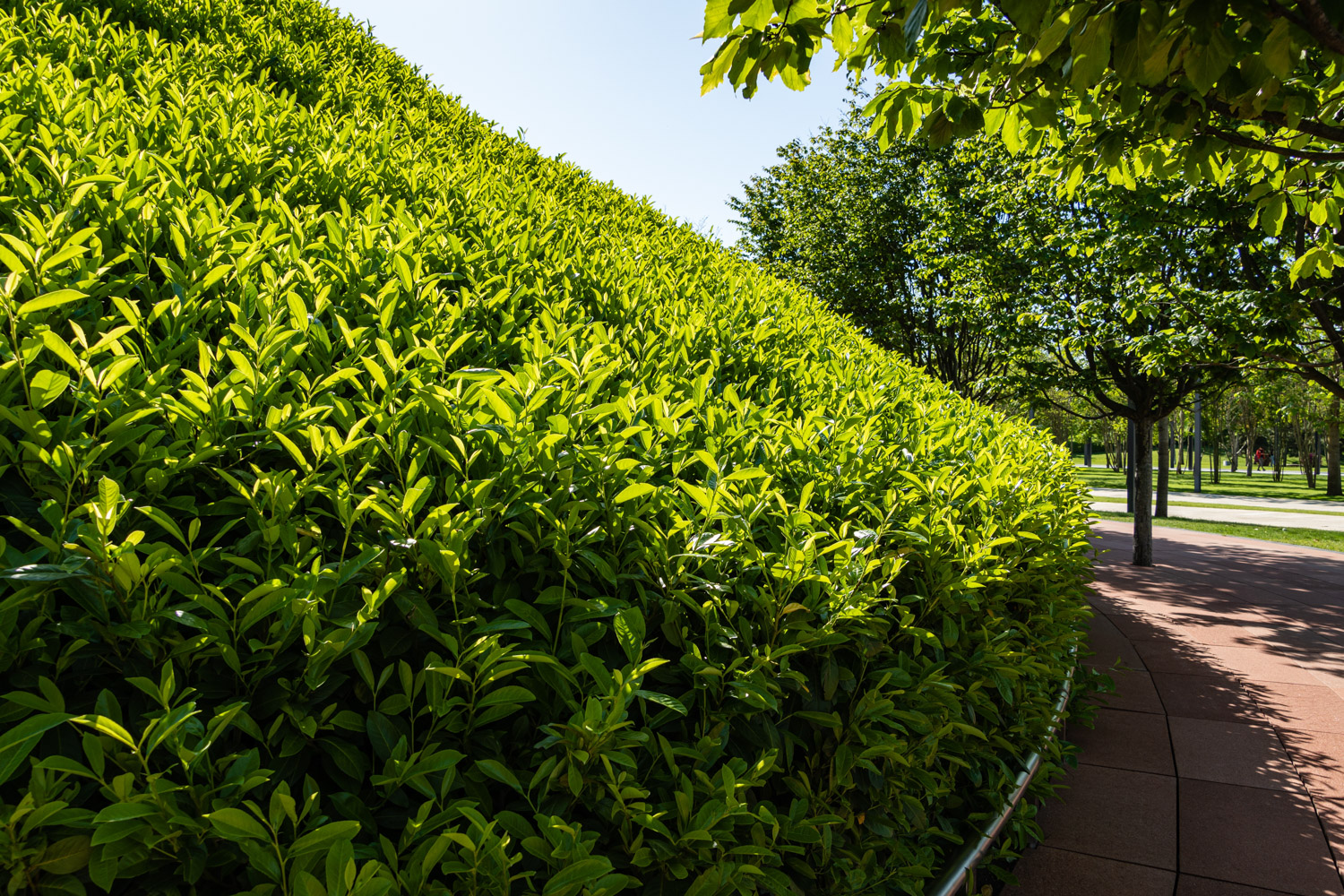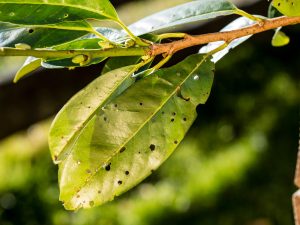
See all posts by this author
Laurel shot hole disease, (Sometimes called Cherry Shot Hole due to the infection of Cherry Laurels) often caused by the fungus Stigmina lautii or sometimes Blumeriella lauri, results in small holes in the leaves of laurels where the fungus has attacked. These holes are the result of infected portions of the leaf dropping out. The disease can detract from the beauty of the plant and, in severe cases, weaken it.
Of course, prevention and treatment for cherry shot hole is included in a Plant Health Care subscription from Arborscapes. (As are myriad other pests and diseases) If you would like to become a part of our Plant Health Care program, reach out to Arborscapes today! Your living landscape will be the envy of the entire neighborhood!
Here’s a guide on managing and treating cherry laurels in the Carolinas with shot hole disease:
Cultural and Environmental Controls:
- Proper Spacing: Ensure laurels have adequate spacing to allow for good air circulation. This helps reduce leaf wetness and consequently reduces the conditions favorable for fungal growth.
- Watering: Avoid overhead watering which can wet the foliage. Instead, water at the base of the plant. If you must water from above, do so early in the day so the sun can dry the foliage.
- Sanitation: Regularly remove and dispose of fallen leaves and pruned material. This helps minimize the source of fungal inoculum.
Physical Controls:
- Pruning: Thin out crowded branches to improve air circulation. Remove and dispose of affected leaves and branches. Disinfect pruning tools between cuts using a 10% bleach solution or rubbing alcohol.
Chemical Controls:
- Fungicides: Preventative fungicide sprays can help manage shot hole disease. Start applications in early spring when new growth emerges and repeat as directed by the product label. Fungicides containing chlorothalonil, myclobutanil, or propiconazole can be effective. Always read and follow label directions carefully.
- Avoid Over-Fertilizing: Excessive nitrogen can promote lush growth, which is more susceptible to fungal infections. Stick to a balanced fertilization routine suitable for laurels.
Preventative Measures:
- Plant Health: Maintaining the overall health of your laurels can help reduce their susceptibility to diseases. This includes proper watering, fertilization, and preventing mechanical damage.
- Mulching: Applying a layer of mulch around the base of the laurel can help maintain soil moisture, reduce weed competition, and prevent the splash of fungal spores from the soil onto the plant during rain or watering.
Monitoring:
- Regularly inspect your laurels for signs of shot hole disease. Early detection and intervention are crucial for effective management.
- Monitor environmental conditions. Prolonged wet and humid conditions can increase the risk of shot hole and other fungal diseases.
Combining cultural practices with, when necessary, chemical controls, will give you the best chance of managing and preventing laurel shot hole disease. It’s also important to note that even with the best preventative measures, some minor shot hole symptoms might still occur, but they are less likely to severely affect the plant’s overall health.
And if all of this sounds like too much work, contact Arborscapes to subscribe to our Plant Health Care program, and we will take care of this, other pests, fertilization and health concerns for your living landscape!
See all posts by this author

